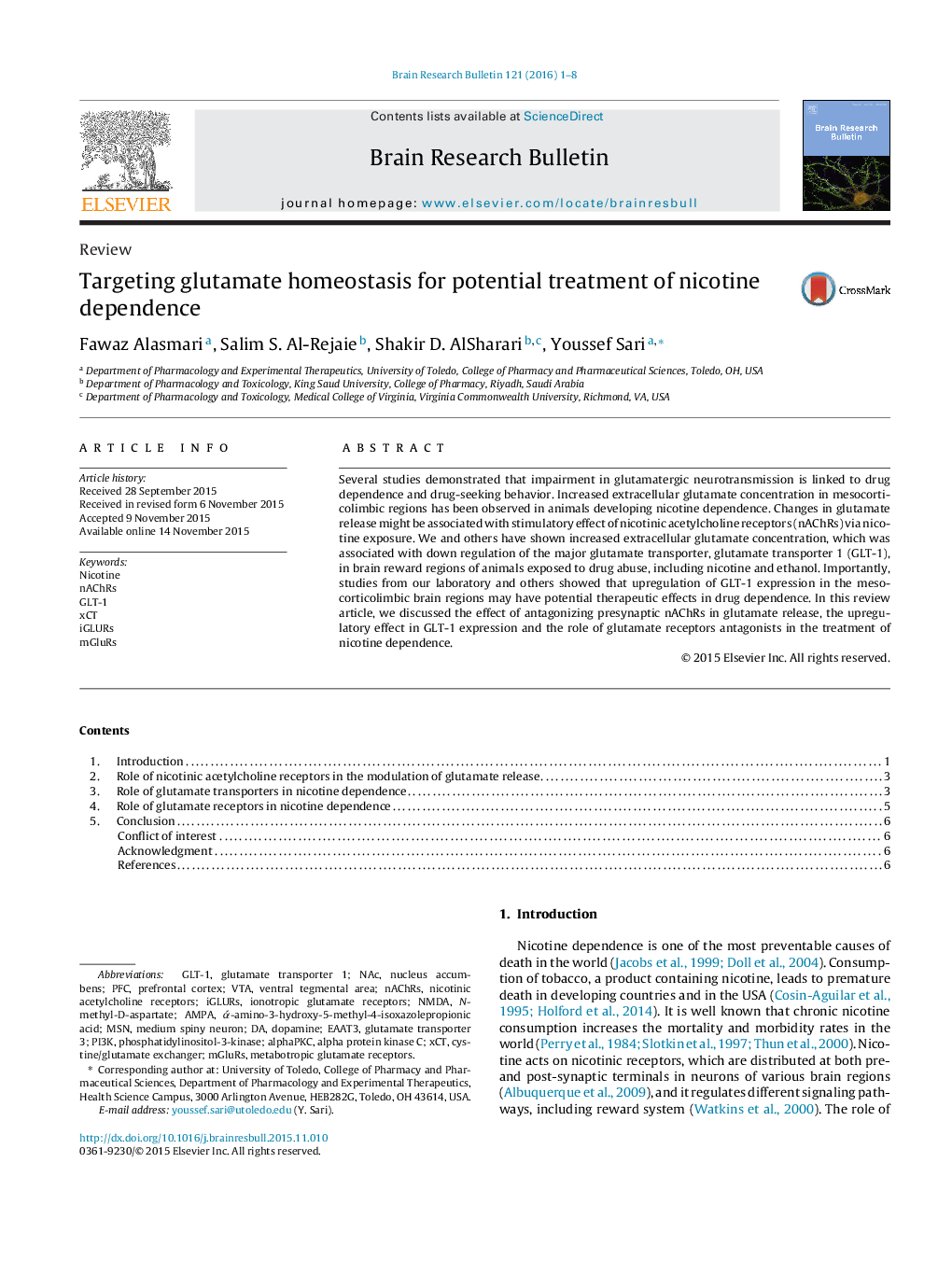| کد مقاله | کد نشریه | سال انتشار | مقاله انگلیسی | نسخه تمام متن |
|---|---|---|---|---|
| 4318641 | 1613235 | 2016 | 8 صفحه PDF | دانلود رایگان |
• Nicotine stimulates glutamate release and calcium influx.
• NMDA and AMPA receptors antagonists decrease nicotine-induced dopamine release.
• GLT-1 and xCT upregulators reduce nicotine self-administration.
• iGLUR and mGluR1/5 antagonists and mGluR2/3 agonist attenuate nicotine seeking.
Several studies demonstrated that impairment in glutamatergic neurotransmission is linked to drug dependence and drug-seeking behavior. Increased extracellular glutamate concentration in mesocorticolimbic regions has been observed in animals developing nicotine dependence. Changes in glutamate release might be associated with stimulatory effect of nicotinic acetylcholine receptors (nAChRs) via nicotine exposure. We and others have shown increased extracellular glutamate concentration, which was associated with down regulation of the major glutamate transporter, glutamate transporter 1 (GLT-1), in brain reward regions of animals exposed to drug abuse, including nicotine and ethanol. Importantly, studies from our laboratory and others showed that upregulation of GLT-1 expression in the mesocorticolimbic brain regions may have potential therapeutic effects in drug dependence. In this review article, we discussed the effect of antagonizing presynaptic nAChRs in glutamate release, the upregulatory effect in GLT-1 expression and the role of glutamate receptors antagonists in the treatment of nicotine dependence.
Journal: Brain Research Bulletin - Volume 121, March 2016, Pages 1–8
